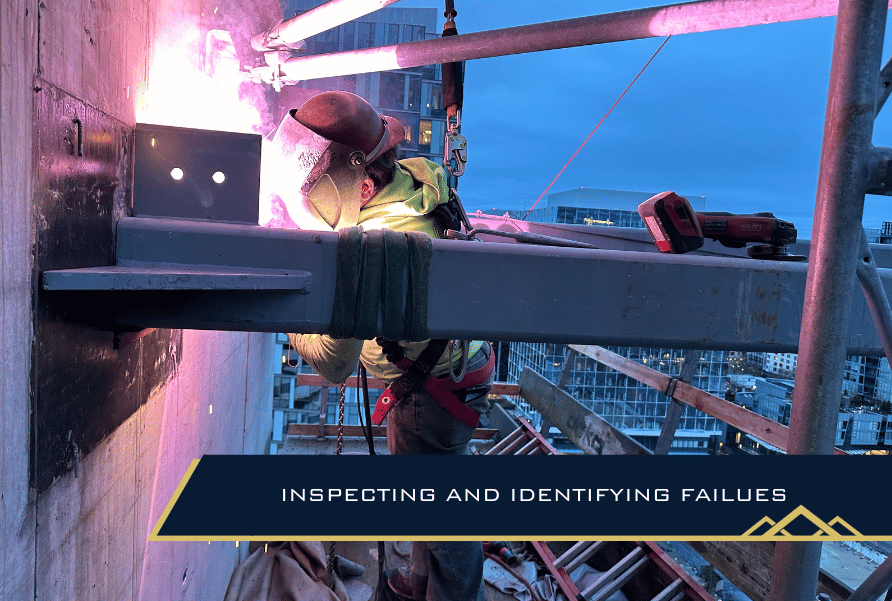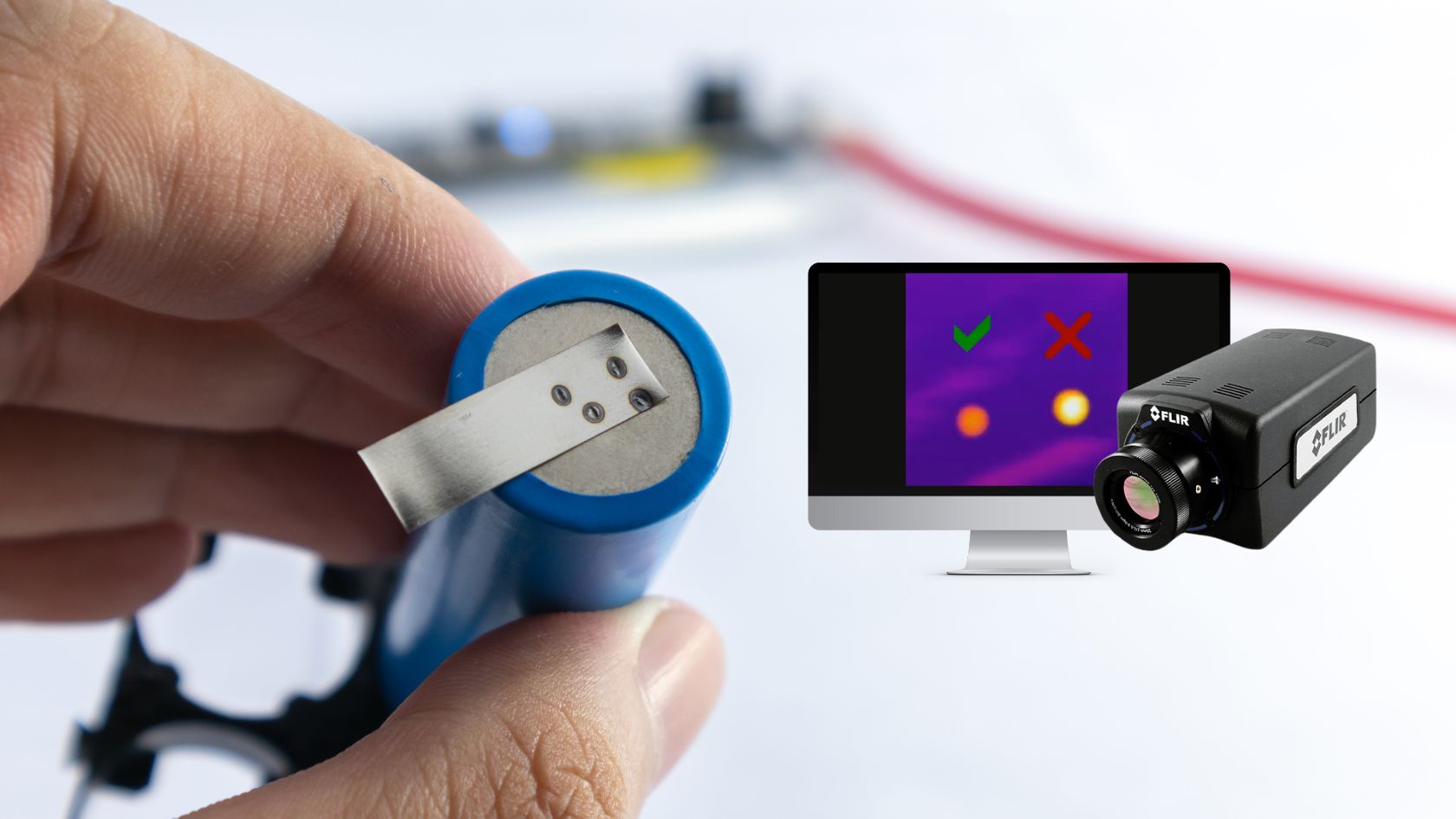How Regular Welding Inspection Madison Can Conserve You Money And Time
How Regular Welding Inspection Madison Can Conserve You Money And Time
Blog Article
Discovering Advanced Equipment and Methods for Accurate Welding Evaluation
In the world of welding evaluation, the search of accuracy and dependability is paramount, spurring the growth of sophisticated devices and methods. Laser scanning advancements and automated evaluation systems, furnished with fabricated intelligence, are redefining the landscape by minimizing human mistake and enhancing safety and security steps.
Ultrasonic Evaluating Advancements
Ultrasonic screening technologies often stand for the forefront of improvements in welding evaluation innovations. These technologies have actually dramatically improved the capacity to discover and examine interruptions within welded frameworks, guaranteeing improved honesty and safety.

Furthermore, innovations in software application formulas for information evaluation have actually improved the accuracy of issue detection and sizing. Automated ultrasonic screening systems now supply high-resolution imaging, making it possible for comprehensive assessments of weld top quality. These systems are frequently incorporated with sophisticated visualization devices, which facilitate the interpretation of outcomes.
Radiographic Examination Strategies
While ultrasonic screening advancements have actually established a high criterion in non-destructive assessment, radiographic examination methods continue to play an essential duty in welding assessment by using unique insights into material stability. Radiographic testing (RT) employs the use of X-rays or gamma rays to permeate materials, creating a radiograph that visually stands for the internal structure of a weld. This imaging capability is indispensable for discovering subsurface flaws such as porosity, incorporations, and fractures that might not show up with surface area assessments.
The process entails placing a radiation resource on one side of the weld and a detector on the opposite side. Variants in material density and density impact the attenuation of the rays, generating a different picture that precisely marks flaws. RT is specifically useful for examining complicated geometries and thick areas where various other techniques might fail.
Regardless of its effectiveness, radiographic inspection must be carried out with rigorous adherence to safety methods because of the dangerous nature of ionizing radiation. The interpretation of radiographs calls for experienced employees, as the quality of the evaluation straight affects the reliability of the assessment. Consequently, continuous advancements in digital radiography are improving photo quality and interpretation performance, strengthening RT's essential function in making sure weld top quality.
Laser Scanning Developments
Welcoming laser scanning modern technology in welding assessment has actually changed the evaluation of weld top quality and honesty. This sophisticated approach supplies a non-contact, high-resolution methods of catching comprehensive 3D information of weld surfaces. Unlike typical evaluation techniques, laser scanning offers quick information purchase, considerably enhancing the effectiveness and precision of weld analyses. The innovation employs laser beam of lights to develop specific 3D versions, which are crucial for comprehensive evaluation of weld dimensions, surface irregularities, and potential defects.
Laser scanning developments have caused significant improvements in identifying and characterizing surface area problems such as porosity, lack of combination, and undercuts. The high-resolution information enables examiners to do extensive evaluations, guaranteeing that welds fulfill rigorous industry criteria. Additionally, this approach supports the advancement of digital documents, facilitating lasting high quality guarantee and traceability.
Furthermore, laser scanning modern technology integrates seamlessly with software solutions created for automated problem discovery and analysis. The resultant data can be quickly shared and reviewed, important source promoting joint decision-making processes. As sectors remain to require higher standards for weld high quality, laser scanning continues to be at the leading edge, using unmatched precision and performance in welding inspection.
Automated Inspection Equipments

Automated examination systems supply the advantage of consistency, removing human error and subjectivity from the examination procedure. They are made to run in numerous atmospheres, from production floors to remote field sites, guaranteeing extensive coverage. Welding Inspection Madison. These systems can be programmed to abide by particular welding standards and requirements, offering comprehensive records and documentation for top quality control functions
Moreover, the assimilation of cloud-based systems helps with the storage and analysis of huge quantities of assessment data. This makes it possible for trend evaluation and predictive upkeep, allowing suppliers to deal with possible issues prior to they rise. The adoption of computerized inspection systems is an essential move towards boosting the reliability and effectiveness of welding procedures in industrial applications.

Enhancing Safety and Efficiency
A considerable facet of enhancing security and efficiency in welding assessment exists in the combination of ingenious click this site modern technologies that simplify procedures and alleviate threats. The adoption of sophisticated non-destructive testing (NDT) methods, such as ultrasonic testing, phased variety ultrasonic testing (PAUT), and radiographic testing, plays a crucial duty in ensuring architectural stability without endangering the safety of the employees entailed. These methods permit thorough assessments with marginal downtime, lowering potential hazards linked with typical techniques.
Additionally, the implementation of real-time data analytics and artificial intelligence algorithms has actually transformed the way inspection data is translated. By employing predictive analytics, potential defects can be identified before they show up right into essential failings, making sure timely treatments and upkeep. This proactive strategy substantially improves operational effectiveness and safety in welding procedures.
Moreover, remote examination technologies, including drones and robot crawlers furnished with high-resolution electronic cameras, enable inspectors to analyze hard-to-reach locations without exposing them to harmful conditions. This not only boosts inspection precision yet also minimizes human risk. By leveraging these sophisticated tools and approaches, industries can achieve greater security requirements and operational effectiveness, inevitably leading to more reputable and sustainable welding evaluation techniques.
Verdict
The integration of advanced devices and techniques in welding evaluation substantially improves problem discovery and makes certain architectural honesty. Welding Inspection Madison. Technologies such as phased range ultrasonic testing, digital radiography, and laser scanning improve issue characterization, while automated examination systems and AI reduce human error. Remote modern technologies facilitate secure assessments in hazardous environments, promoting an Read Full Report aggressive maintenance approach. These innovations not just enhance assessment effectiveness but also add to improved security and high quality assurance in commercial welding applications.

Ultrasonic screening developments regularly represent the forefront of improvements in welding evaluation innovations.While ultrasonic testing advancements have set a high criterion in non-destructive evaluation, radiographic examination methods proceed to play an essential function in welding examination by using unique insights into material integrity.Accepting laser scanning modern technology in welding inspection has transformed the analysis of weld quality and stability. As markets proceed to demand higher criteria for weld quality, laser scanning continues to be at the center, providing unequaled accuracy and performance in welding evaluation.
Automated evaluation systems use the benefit of uniformity, eliminating human error and subjectivity from the evaluation process.
Report this page